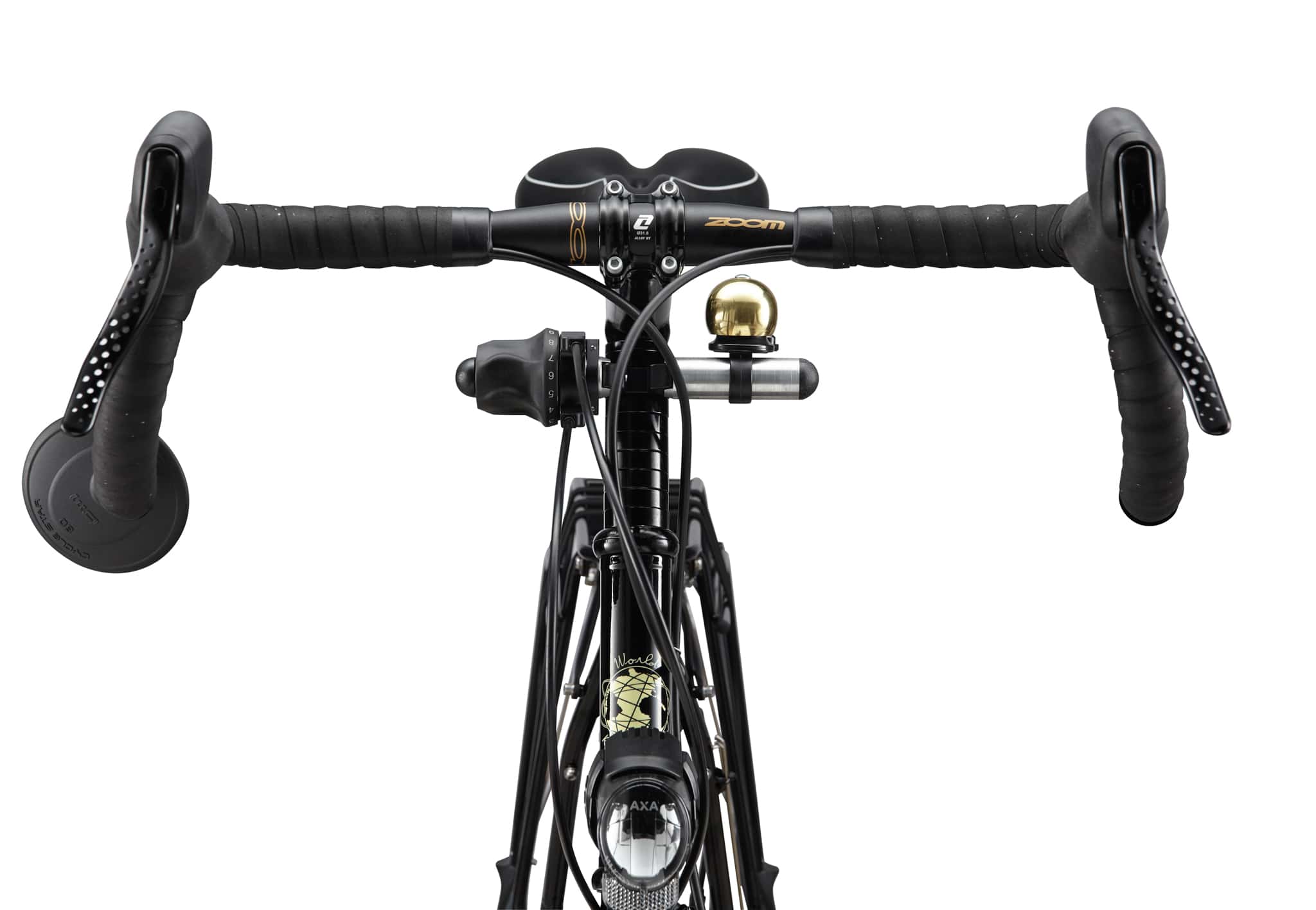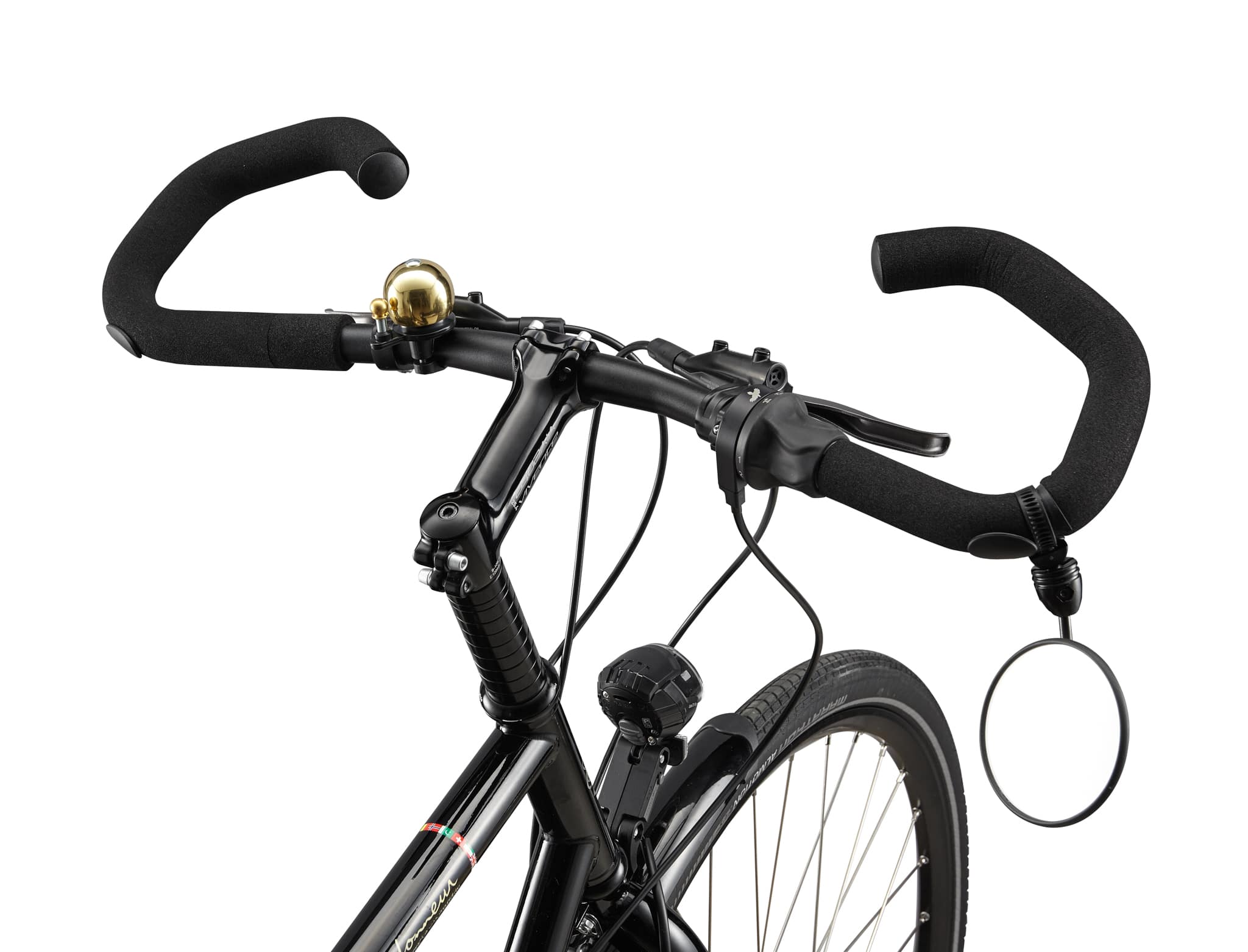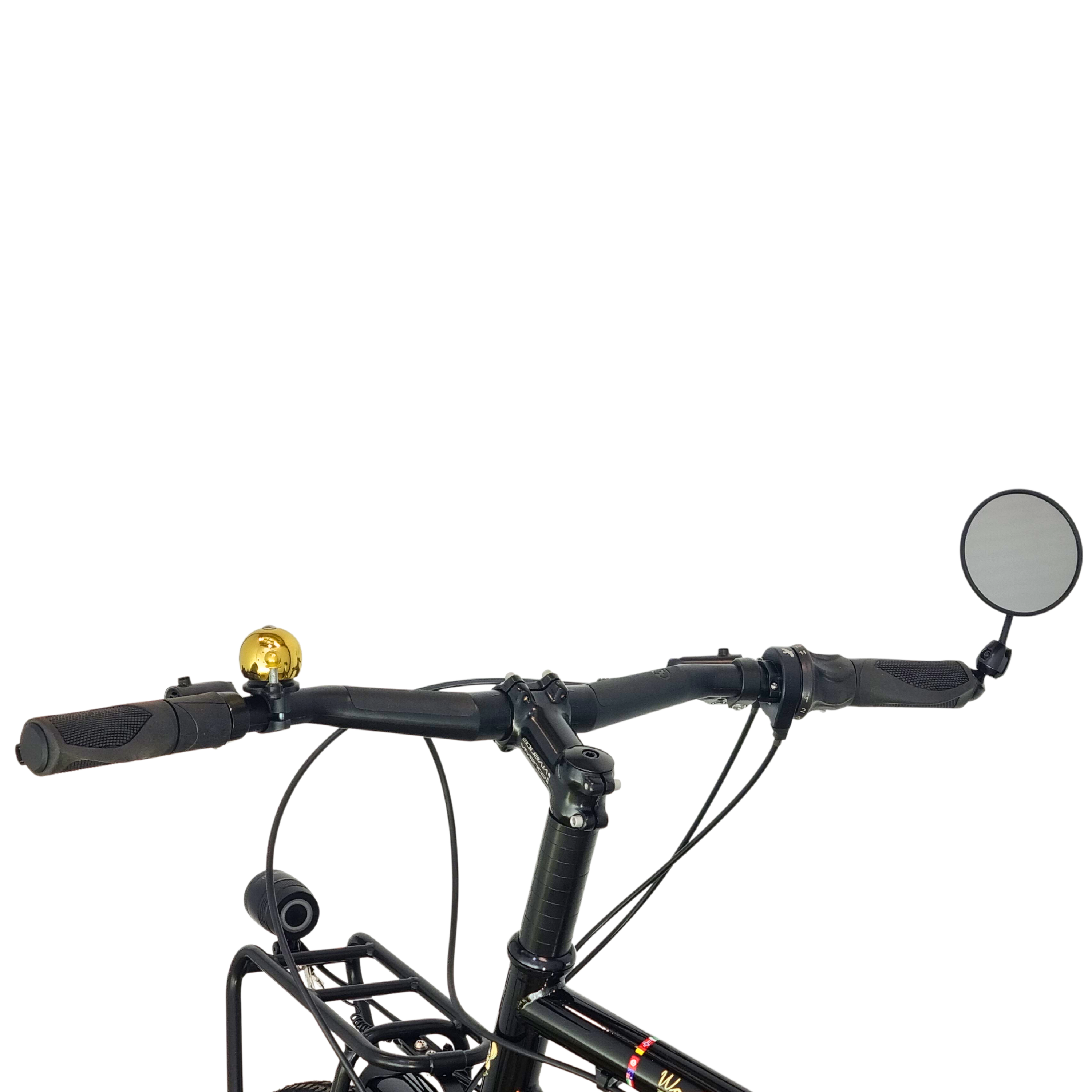The way we hold onto our bike becomes more of an issue when we ride several days in a row and for hours at a time. Being able to change position, especially the part of your hands you are resting on, and the angle of your back, makes a big difference. Choosing the right touring bike handlebars for you important but it is also subjective.
We all need to feel happy on our own bike. Vivente broadly divides handlebars into drop and upright styles. But there is no right or wrong. Our hands become familiar with where everything is within a few days.
The impetus for the drop bar user to change position is sometimes to be lower, to have more power, more body control and less wind resistance. But the trekking or riser bar rider cannot get as low, so thinks less in terms of speed, and possibly more about the scenery.
Are Drop Bars the More Comfortable Touring Bike Handlebar?

Drop bars were originally developed to get our bodies a little lower, or at least to give us the option of being lower. This would reduce wind resistance. But for touring bikes, that get ridden for long periods, they (drop bars) offer the added benefit of being able to change our back-angle.
Are Drop Bars More Comfortable?
You can position your drop bars up high if you want, providing your forks have a long steerer tube. You still get the advantage of drop bars in being able to adjust your back-angle. So, drop bars don’t necessarily mean very low riding positions, they can still be considered a comfortable option. It is still possible to get your body down low as you’d sometimes like to do when going down hills fast, going through faster corners or riding in traffic. The brake lever hoods also give you a whole extra place to put your hands giving you a stretched-out position option.
A unique thing about drop bars is the way you can pull against them in the drop position.
In the racing world, the preferred width of drop bars is the width of your shoulder joints. That’s related to optimizing lung capacity. With the advent of so called “gravel” bikes, wider drop bars have become available. The lower (drops) section is flared out. Bore size (where the stem clamps the bar) has standardised at 31.8mm (they used to be 25.4mm or 26.0mm) so as to prevent movement in rough terrain. These are also improvements for long distance touring.
The new designs with flared out drops, are about 6cm wider. They are very comfortable and more steering leverage makes them seem “lighter”. They move the mirror in the HB end out and rear vision is superb.
Upright Touring Handlebars
Trekking Bars

Trekking bars allow for lots of holding positions, including the chance to stretch right out. You might choose trekking bars if you often find you need to lean forward but you dislike drop bars. They can also be easily rotated to get an even higher upright position.
Traditionally trekking bars like these were designed for slightly more turning control in long distance touring. Their width makes them ideal for more stability in slow speeds while carrying heavy loads.
Baramind Riser Bars

These new French-made handlebars use injected polymer mixture to manage vertical deformation. The bars flex downwards on impact but remain rigid when pulling up. They absorb shocks downward but lock upwards to maintain good control of the direction. The idea is to provide comfort when you need it and control when you don’t.
Baramind makes a few models but the one suited to travel bikes is the BAM Trek. These have a 12° back sweep, are 660mm wide and weigh 350gms. (They are carbon fibre).
Lab and field tests were made using accelerometers placed on rider’s wrists, on the two ends of the handlebar and on the stem. These data were recorded to measure handlebars absorbing capacities.
Baramind handlebars were compared with regular handlebars from the market. Results show that Baramind significantly reduces vibrations transmissibility from handlebar to rider’s wrists. Thereby, muscle recovery of the upper limb is improved, and fatigue is reduced.
The normal Baramind bar is for riders 80kg and over and there is a soft version for riders under 80kg.
Although new, these bars have been widely adopted by high-end travel bike brands for obvious reasons.